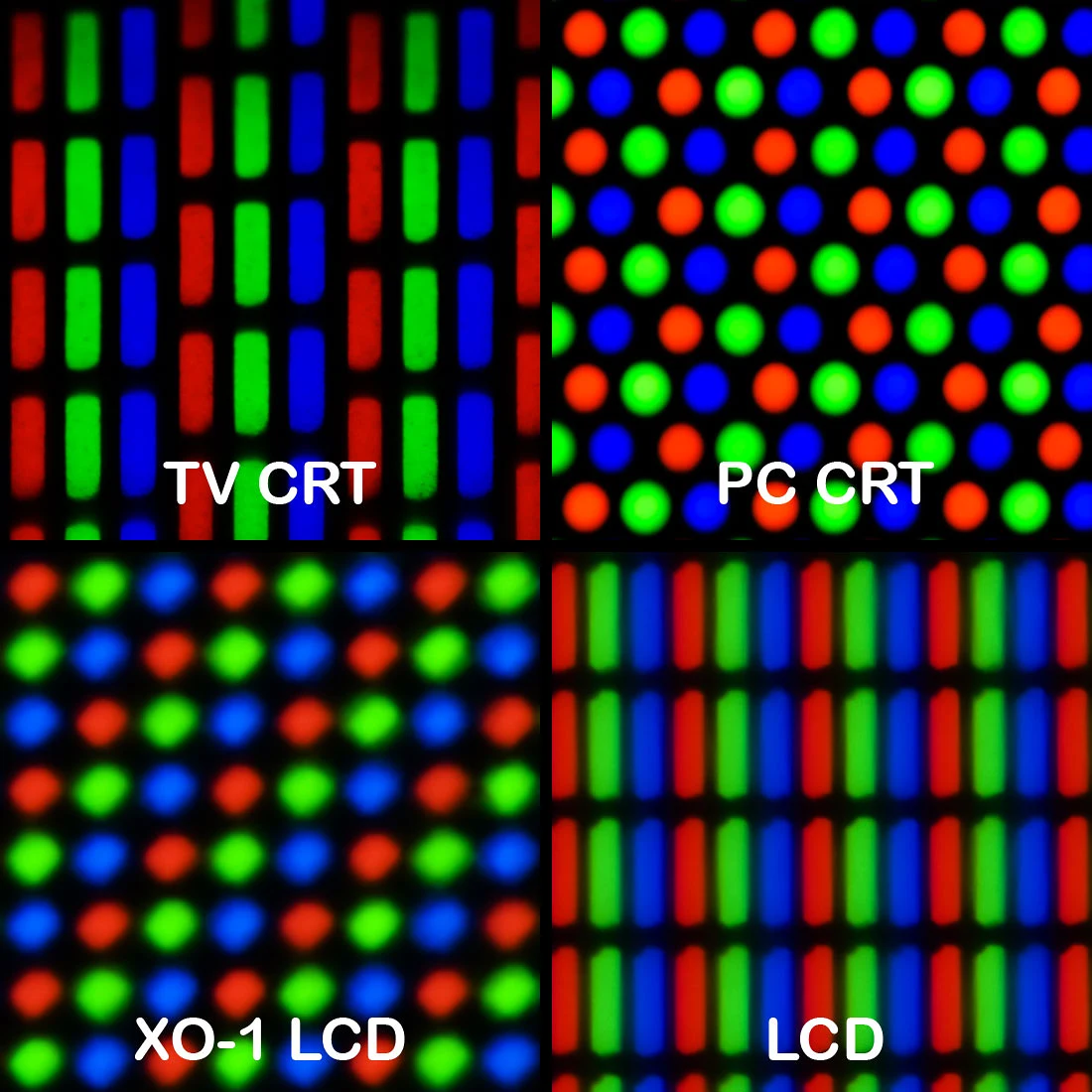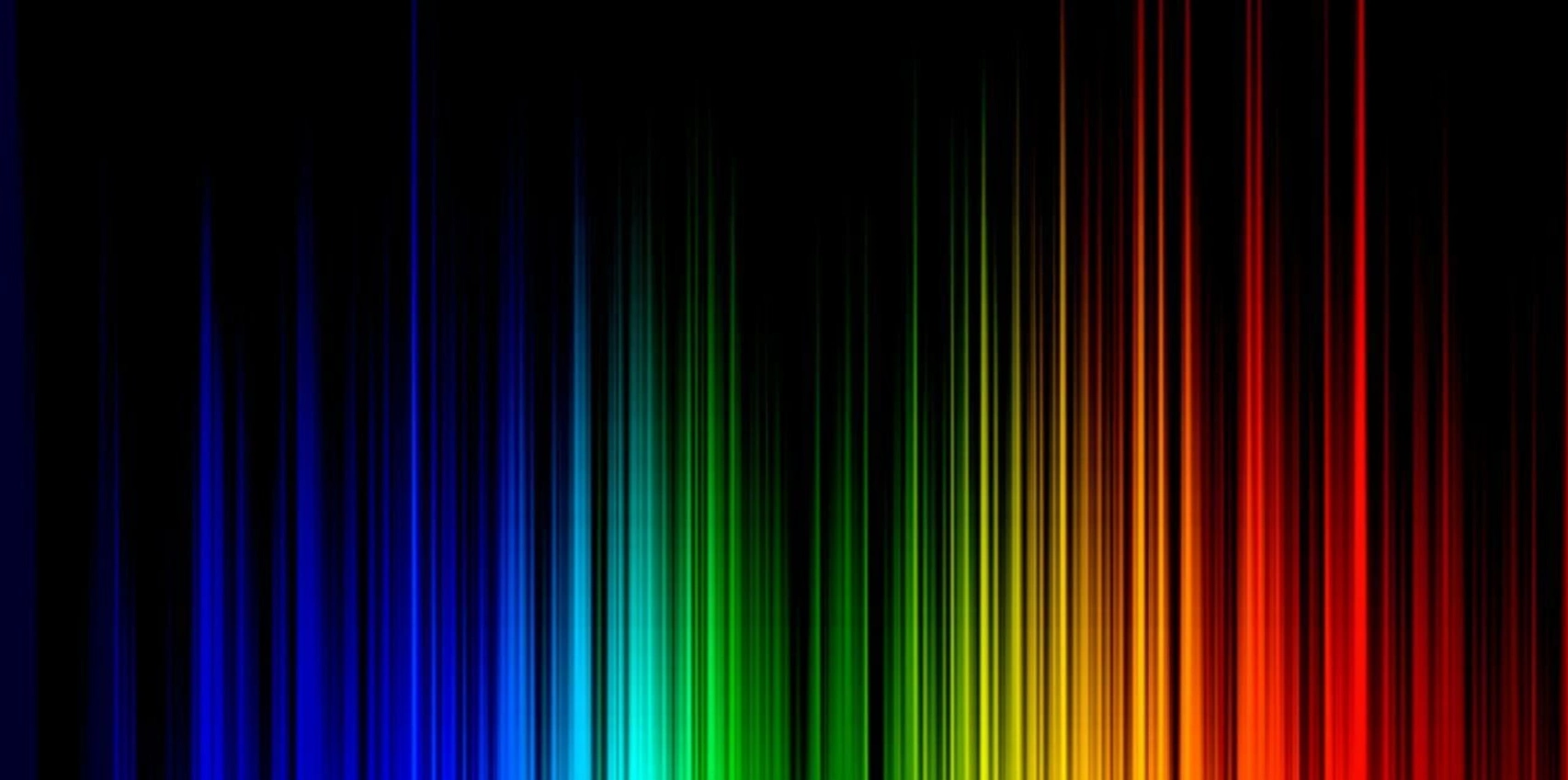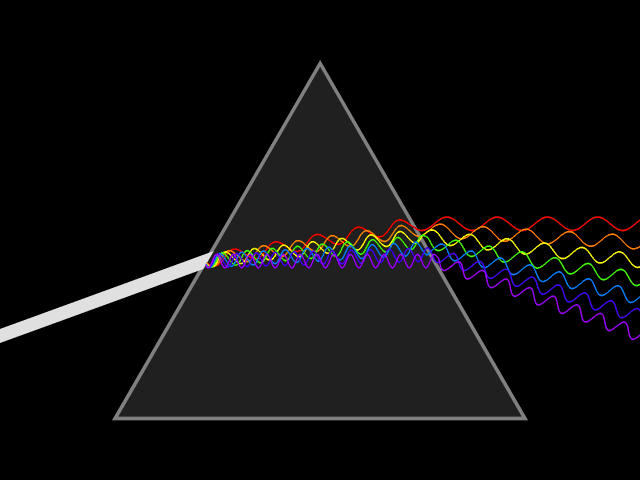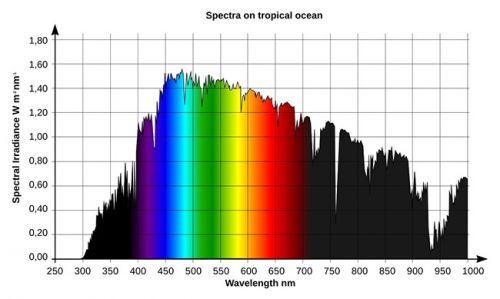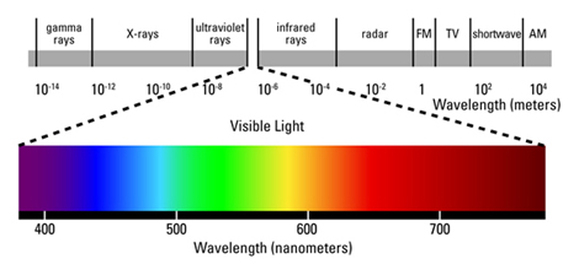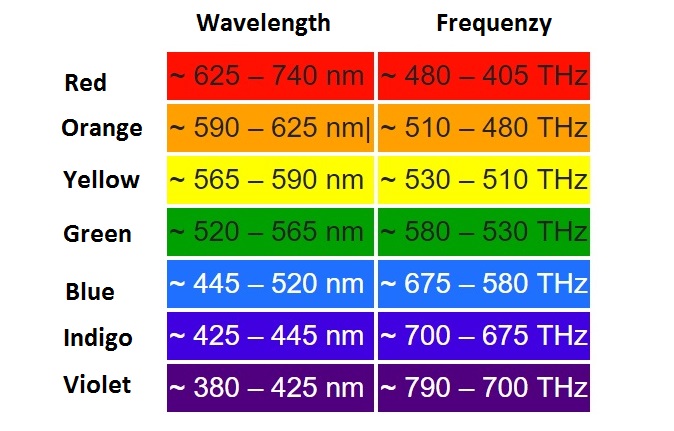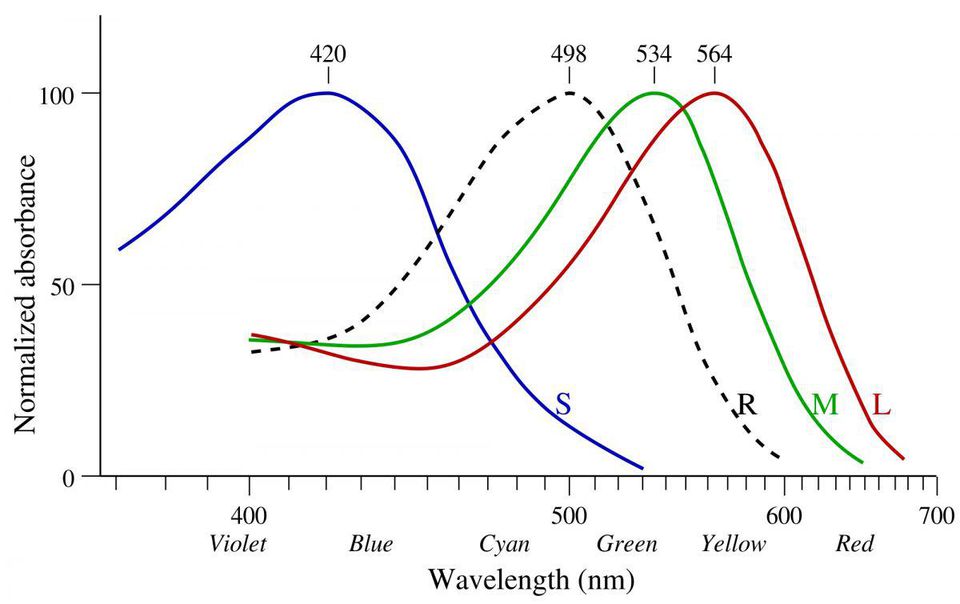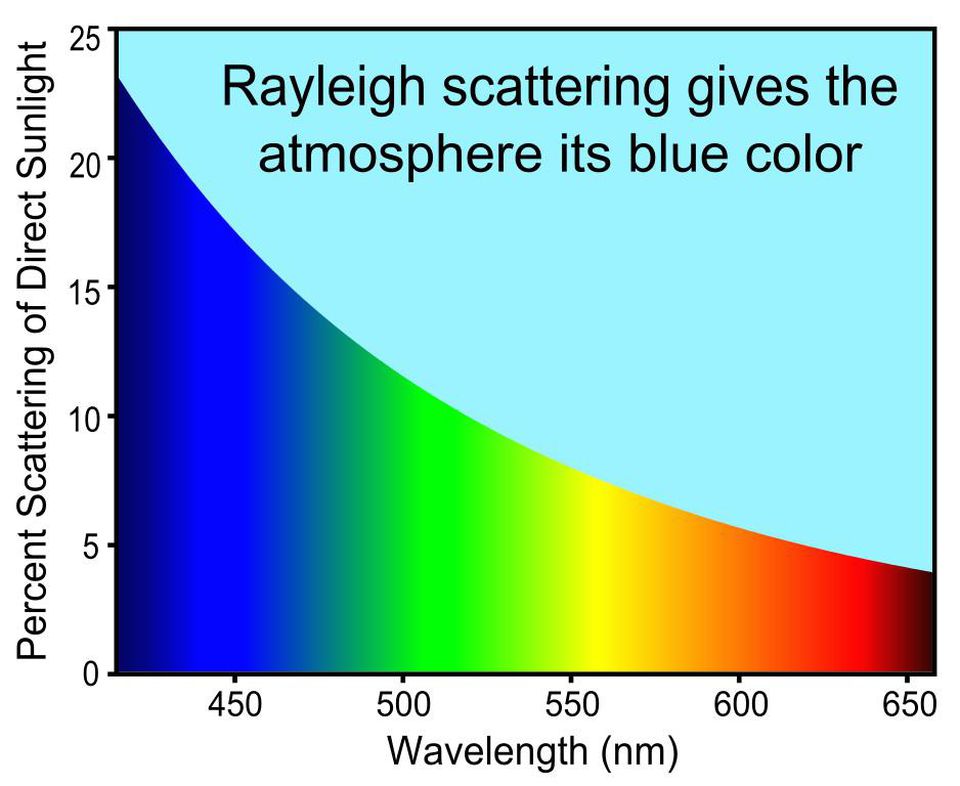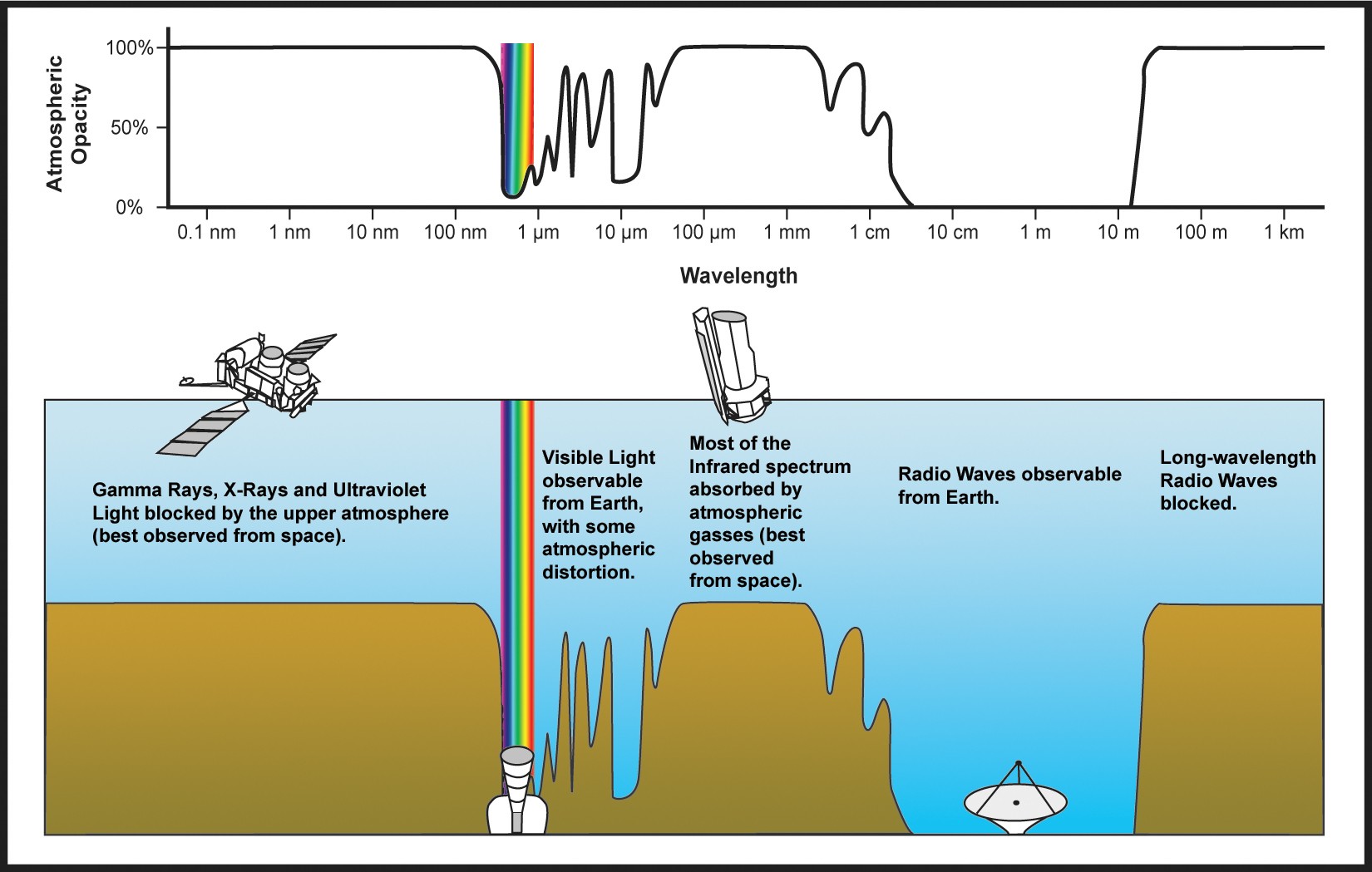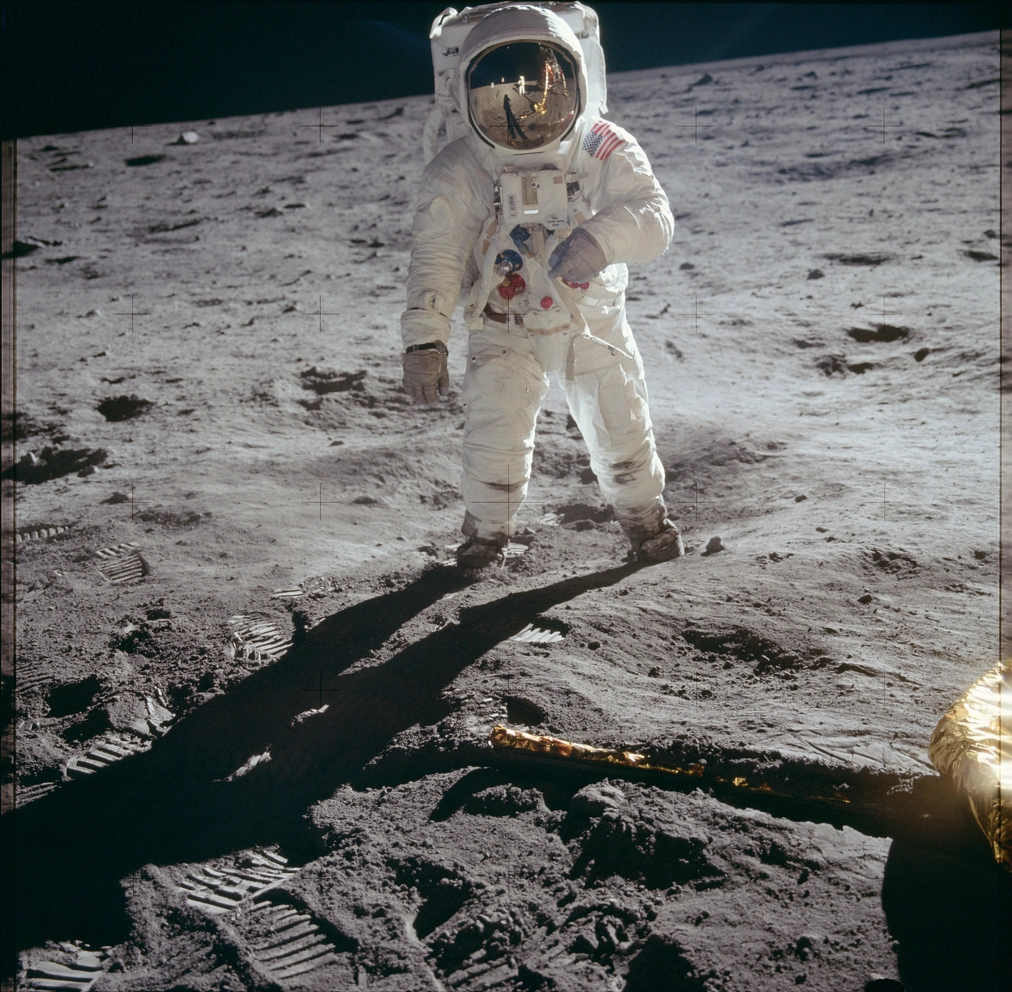- 10 – 121 nm – Extreme Ultraviolet (Ionizing radiation)
- 100 – 240nm – Creates ozone!
- 100 – 200 nm – Ultraviolet C / UVC / UVV
- 122 – 200 nm – Far Ultraviolet (FUV)
- 200 – 280 nm – Ultraviolet C / UVC / Hard UV
- 200 – 300 nm – Middle ultraviolet (MUV)
- 240 – 280nm – Kills ozone!
- 253.7 nm – Ideal for UVC Germicidal, no ozone
- 280 – 315 nm – Ultraviolet B / UVB (mostly absorbed)
- 300 – 400 nm – Near ultraviolet (NUV)
- 315 – 400 nm – Ultraviolet A / UVA / Soft UV (Birds, Insects and fish can see this)
- 410 – 420 nm – Violet LED – Skin therapy
- 419 – 445 nm – Blue retina cone
- 430 – 470 nm – Blue LED – Dental curing
- 470 nm – Blue LED – White LED using phosphor
- 496 – 498 nm – white retina rod
- 520 – 530 nm – Green traffic light LED
- 531 – 545 nm – Green retina cone
- 559 – 580 nm – Red retina cone
- 630 – 640 nm – Red traffic light LED
- 660 nm – Red LED for Blood oximetry
- 680 nm – Red LED for Blood analysis
- 800 – 850 nm – Near IR illuminators used in night vision
- 850 – 940 nm – Photoelectric remote controls
- 940 nm – Convert illumination CCD based system
*Retina numbers are not visible range, but are the range of peak spot frequencies given from different sources
UV..
Congo Blue – LEE C181<br>
Primary Red – ROSCO 27
- Visible Spectrum: The visible spectrum is the range of wavelengths of light that the human eye can perceive. It spans from approximately 380 nanometers (nm) for violet light to 750 nm for red light.
- ROYGBIV: The colors of the visible spectrum are often remembered using the acronym ROYGBIV, which stands for red, orange, yellow, green, blue, indigo, and violet.
- Infrared and Ultraviolet: Beyond the red end of the visible spectrum, there is infrared light, and beyond the violet end, there is ultraviolet light. Infrared light has longer wavelengths than red light, while ultraviolet light has shorter wavelengths than violet light.
- White Light: White light is a combination of all the colors in the visible spectrum. When white light passes through a prism, it can be separated into its individual colors, creating a rainbow.
- Rainbows: Rainbows are formed when sunlight is refracted, or bent, in raindrops, separating the sunlight into its various colors. Each raindrop acts like a tiny prism.
- Speed of Light: Light travels at a speed of approximately 299,792 kilometers per second (186,282 miles per second) in a vacuum. This speed is denoted by the symbol ‘c’ and is one of the fundamental constants of nature.
- Doppler Effect: The Doppler effect is the change in frequency or wavelength of a wave in relation to an observer who is moving relative to the wave source. This effect is observed in light as well, contributing to phenomena such as redshift in astronomy.
- Photons: Light is composed of particles called photons. These photons exhibit both wave-like and particle-like properties, a phenomenon known as wave-particle duality.
- Electromagnetic Spectrum: Light is just a small part of the electromagnetic spectrum, which includes various types of electromagnetic waves such as radio waves, microwaves, infrared radiation, visible light, ultraviolet radiation, X-rays, and gamma rays.
- Applications: Different wavelengths of light have various applications. For example, infrared radiation is used in night-vision technology, ultraviolet light is used in sterilization processes, and visible light is crucial for vision and photography.
Typical Camera sensor
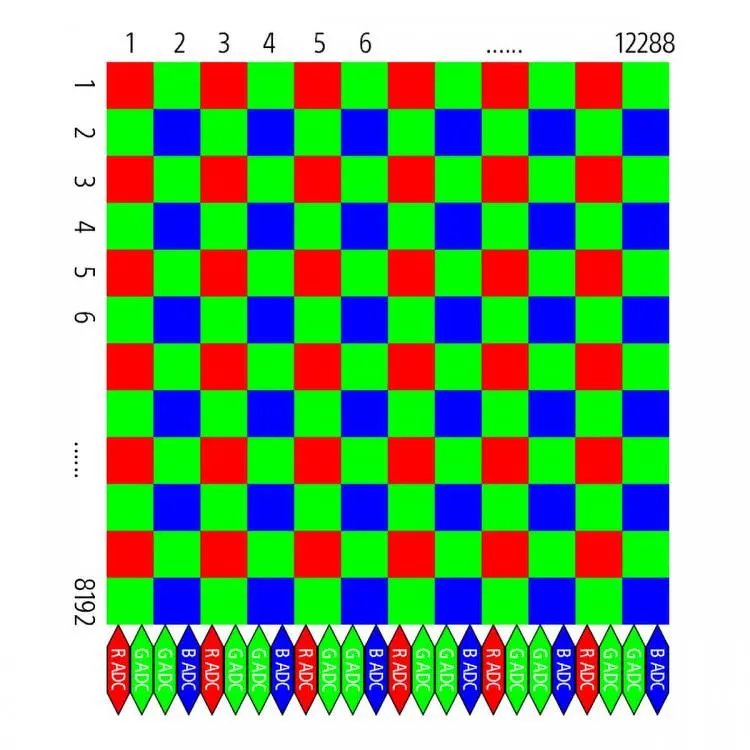
Typical Monitor Pixels
